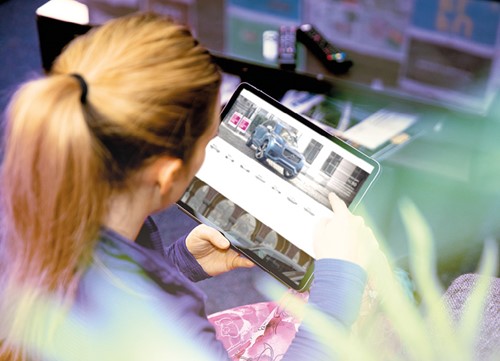In this series Philip Nothard, Insight and Strategy Director for Cox Automotive UK, takes a deep dive into some of the key trends emerging in 2021, how they could evolve in the coming year, and how retailers can capitalise on them.
Much has been written in recent years about the shift from a service economy to the experience economy; a move which has seen organisations focus on how the customer accesses their services, rather than the service itself. Indeed, the original advocates of the experience economy model, Pine and Gilmore, talk of four key focal points on the experiential journey: Education, Escapism, Entertainment and Esthetics.
When organisations create the digital customer experience, they should be thinking about how to meet all four elements – providing information, aspiration and diversion or distraction, humour or fantasy, and something which draws on all the senses. Appealing to the 4Es, many automotive organisations create immersive advertising experiences and use storytelling to capture the imaginations of prospective buyers. The showroom is an extension of the storytelling environment.
With the experience beginning the very first moment a consumer considers purchasing or financing a vehicle and running all the way through to disposing of that vehicle after its useful life, there are hundreds if not thousands of potential touchpoints along the way. Manufacturers, dealers, and the aftermarket have significant opportunity to create resonance with the consumer, offering an experience which is seamless, integrated, personalised and multi-channel.

Trust and transparency are needed
For a multi-channel customer journey in automotive to be successful, consumers need to buy into the notion of purchasing big-ticket items online. It seems that consumer behaviours have started to move that way, accelerated by the global pandemic.
Speaking to NADA in May 2020, Lissette Gole, Head of Automotive Retail at Google, outlined some of the key consumer behaviour trends that have emerged since the start of the pandemic. Around seven in ten (68%) auto shoppers at the time saw digital experiences and interactions as good alternatives to visiting the dealership, with one in five saying they would purchase immediately if given an online option.
Search queries relating to buying a car online have also continued to increase, up +82% in the UK, while at-home test drives were the most popular alternative to visiting a dealership, and vehicle review videos are the most popular digital alternative.
While the data has revealed an increased appetite for a multi-channel buying experience, trust and transparency between the retailer and consumer are vital to carry this out seamlessly. As an industry, it is important to put in place the tools and processes to support customers and consumers in the right way.
Consumers want to know that if they make the wrong decision, they can put it right with minimal hassle and little to no cost. They need to trust that the information they are getting is correct and see a transparent process to manage any issues which may arise.

The part-exchange problem
One particular area retailers should consider is the part-exchange. More than 50% of vehicle transactions have a part-exchange attached to them, and as the industry drives towards e-commerce, and digital retailing becomes core, being able to handle part-exchange vehicles remotely is critical to the success of the journey.
Cynicism and a lack of trust may historically have led dealers to require physical appraisals while consumers often sought out a second opinion, but that’s no longer the case. As highlighted by Paul Humphreys, Managing Director of Car Buying and Mobility at Cox Automotive: “Part-exchanges have the potential to cause friction. Our mission is to improve online and in-store vehicle transactions for everyone. By removing the barriers, implementing a transparent process, and enabling a frictionless experience, we create an environment in which trust is at the heart of the relationship."
What was once an area of contention between the retailer and consumer, can become very simple when transparency is added to the process. The tools to do this both online and in-store exist today, and Cox Automotive, with its large-scale auction and vehicle services businesses, is well placed to support the change.
Discover more on this topic
In this series we’re exploring the key trends emerging this year and how dealers can capitalise on them. For a deeper dive into each topic, look no further than our Insight Report 2020.
The report, produced in partnership with Grant Thornton and our associate partners, LexisNexis and NFDA, takes a comprehensive and informed look at some of the biggest trends and topics influencing the automotive industry today.
